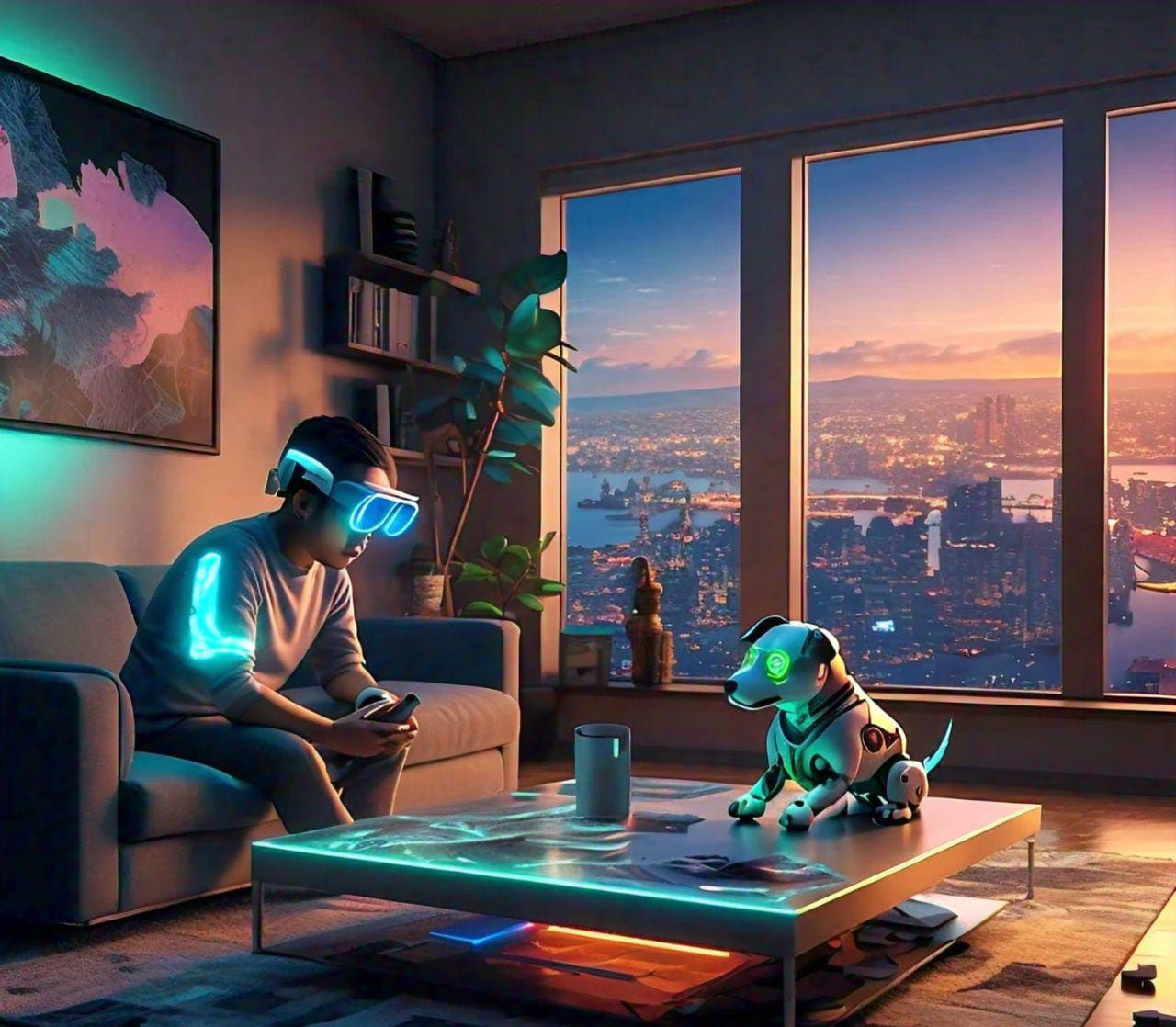Outline
- Introduction
- Definition of Augmented Reality (AR)
- A brief history of AR
- How Augmented Reality Works
- basic technology behind AR
- Types of AR devices
- Applications of Augmented Reality
- AR in gaming
- AR in education
- AR in healthcare
- AR in retail
- AR in real estate
- Benefits of Augmented Reality
- Enhanced user experience
- Improved learning and training
- Increased engagement in marketing
- Challenges and Limitations
- Technical challenges
- Privacy concerns
- High cost of development
- Future of Augmented Reality
- Predictions and trends
- Potential impact on various industries
- Conclusion
- FAQs
- What is Augmented Reality?
- How is AR different from Virtual Reality (VR)?
- What are some popular AR applications?
- What devices are used for AR?
- What is the future of AR?
Augmented Reality (AR): Revolutionizing Our Perspective on the World
Introduction
Augmented Reality, commonly known as AR, is a technology that superimposes digital information—such as images, videos, and sounds—onto the real world. Unlike Virtual Reality (VR), which creates an entirely artificial environment, AR enhances the real-world experience by adding interactive digital elements to it. From its early conceptual stages in the 1960s to the advanced applications we see today, AR has evolved significantly and continues to revolutionize various industries.
How Augmented Reality Works
The foundation of AR technology lies in the integration of digital data with the user’s environment in real time. This process involves several key components:
- Cameras and Sensors: These capture the user’s environment and gather information.
- Processing: This involves sophisticated software that analyzes the input data and determines where and how to place digital elements in the real world.
- Projection: Digital content is projected onto the user’s view of the real world.
- Display: Devices like smartphones, tablets, and AR glasses display the augmented content to the user.
Applications of Augmented Reality
AR in Gaming
Gaming is one of the most widely used AR applications. Games like Pokémon GO have demonstrated the potential of AR to create immersive gaming experiences that blend the virtual and real worlds.
AR in Education
AR has the power to transform education by making learning more interactive and engaging. For instance, AR apps can bring historical events to life, provide 3D views of complex scientific concepts, and offer interactive language lessons.
AR in Healthcare
In healthcare, AR is used for a range of purposes, from surgical visualization to patient education. Surgeons can use AR to overlay critical information onto a patient’s body during procedures, enhancing precision and outcomes.
AR in Retail
Retailers are leveraging AR to enhance the shopping experience. Customers can use AR apps to visualize products in their homes before making a purchase, try on virtual clothing, and receive personalized recommendations.
AR in Real Estate
Real estate agents use AR to give potential buyers virtual tours of properties. This technology allows clients to visualize spaces with different furnishings and finishes, making it easier to make purchasing decisions.
Benefits of Augmented Reality
Enhanced User Experience
AR provides a more immersive and engaging user experience by integrating digital content with the real world. This creates a richer, more interactive environment for users.
Improved Learning and Training
AR can make learning and training more effective by providing hands-on, interactive experiences. This is particularly useful in fields like medicine, engineering, and military training.
Increased Engagement in Marketing
AR can boost customer engagement by creating unique and memorable marketing experiences. Brands can use AR to create interactive advertisements and virtual product trials, driving higher conversion rates.
Challenges and Limitations
Technical Challenges
Developing AR applications can be technically challenging due to the need for advanced software and hardware. Ensuring accurate and real-time integration of digital content with the physical world requires significant technical expertise.
Privacy Concerns
AR applications often collect and process large amounts of data, raising privacy concerns. Ensuring the security and privacy of user data is a critical challenge for developers.
High Cost of Development
The development of AR technology can be expensive, particularly for advanced applications. This high cost can be a barrier for smaller companies and startups looking to enter the AR market.
Future of Augmented Reality
The future of AR is bright, with advancements in technology expected to drive further innovation and adoption.Future projections for augmented reality include:
- Increased Adoption in Various Industries: From healthcare to retail, AR is expected to become more widespread across different sectors.
- Improved Hardware and Software: As technology advances, AR devices and applications will become more sophisticated and accessible.
- Integration with Other Technologies: AR is likely to be integrated with other emerging technologies such as Artificial Intelligence (AI) and the Internet of Things (IoT), creating even more powerful applications.
Conclusion
A game-changing technology, augmented reality, has the power to alter how we interact with the environment. From gaming and education to healthcare and retail, AR is making a significant impact across various industries. Despite the challenges, the future of AR looks promising, with continuous advancements paving the way for new and exciting applications.
FAQs
What is augmented reality?
Augmented reality (AR) is a technology that overlays digital information in the real world, enhancing the user’s perception of their environment.
How is AR different from Virtual Reality (VR)?
While AR adds digital elements to the real world, VR creates a completely artificial environment, isolating the user from the real world.
What are some popular AR applications?
Popular AR applications include Pokémon GO in gaming, educational AR apps, AR surgical tools in healthcare, and virtual try-on apps in retail.
What devices are used for AR?
Devices commonly used for AR include smartphones, tablets, and AR glasses like Microsoft HoloLens and Google Glass.
What is the future of AR?
The future of AR includes increased adoption across various industries, improved hardware and software, and integration with other technologies like AI and IoT.








